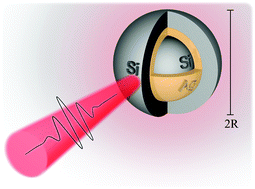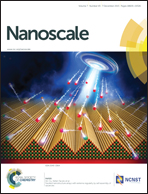Superabsorption of light by nanoparticles
Abstract
Nanoparticles have a fundamental limit as to how much light they can absorb. This limit is based on the finite number of modes excited in the nanoparticle at a given wavelength and maximum absorption capacity per mode. The enhanced absorption can be achieved when each mode supported by the nanoparticle absorbs light up to the maximum capacity. Using a stochastic optimization algorithm, we design multilayer nanoparticles, in which we can make several resonant modes overlap at the same frequency resulting in superabsorption. We further introduce the efficiency of the absorption for a nanoparticle, which is the absorption normalized by the physical size of the particle, and show that efficient absorbers do not always operate in the superabsorption regime.



 Please wait while we load your content...
Please wait while we load your content...